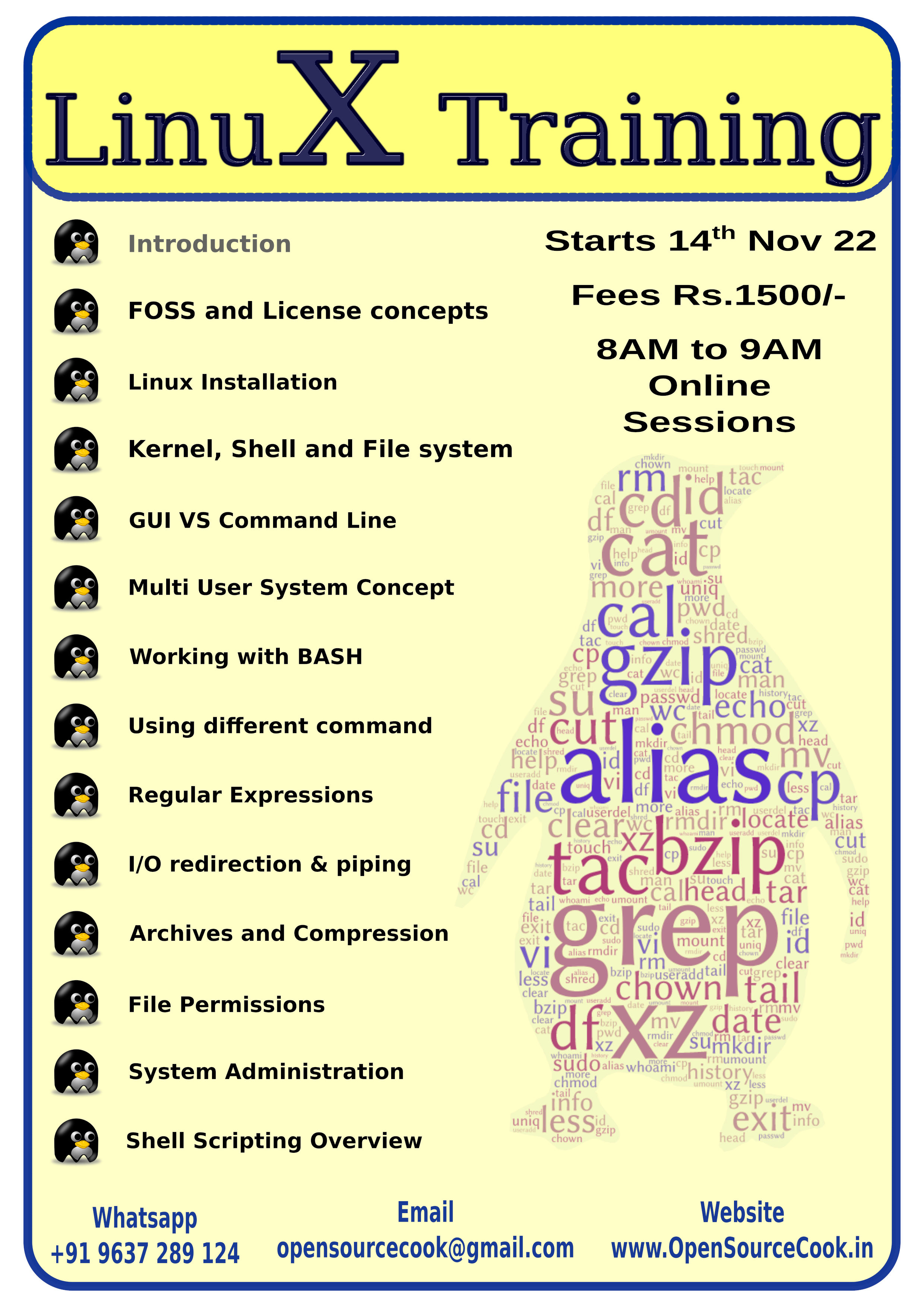|
You will be get hands on experience of system basic administration tool, basic shell scripting, package management etc. The course structure is not focused on any specific Linux system. After completing the course you will be in a position to use any of the GNU/Linux distributions. Duration:
Course Outline:
|
|
|
Course Details:
|
|

